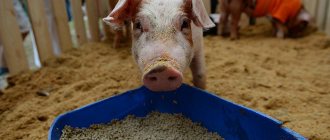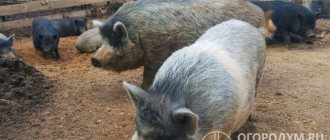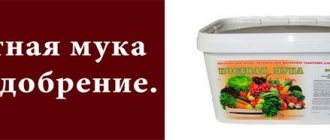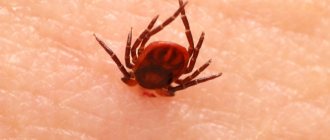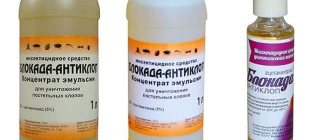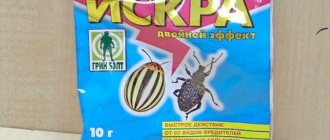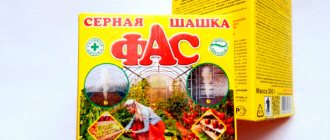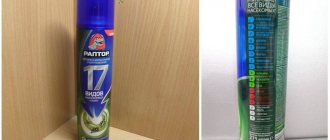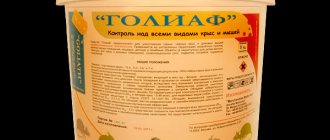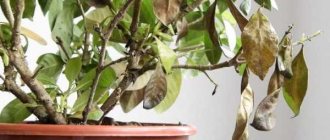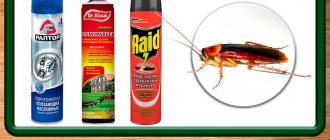Deep bedding for pigs is characterized by the laying of lactic acid and photosynthetic bacteria, thanks to which heat is retained for a long time. The use of fermentation material creates comfortable conditions, saves money (no additional heaters are required) and promotes waste absorption.
The essence and features of the technology
In simple terms, the functionality of deep litter is the same as that of a dry toilet - certain bacteria are placed in dry sawdust or other material.
This technology has been used for many years in the USA, Asia and Europe, as it has a high level of profitability, which reduces costs on farms. The main principle of biolitter is a continuous chain of chemical reactions that cause fermentation. Coprophagous bacteria are contained in special biological preparations. Their action is aimed at the following:
- elimination of unpleasant odors;
- heat generation - up to 40 degrees;
- neutralization of pathogenic microflora;
- strengthening the immune system of pigs;
- reducing the number of times the pigsty is cleaned;
- decomposition of animal waste;
- manure composting.
Deep litter is considered durable - it is used for 4 years. But the main condition for this is the constant presence of livestock animals in this room. Otherwise, the introduced bacteria die (the food source disappears).
Kinds
The material used for bedding is very diverse. As already mentioned, the most commonly used are: hay, straw, dried corn trunks, feather grass and even moss.
In addition, materials such as corn trunks are also additional food for pigs.
Modern technologies have made it possible to use a combination of organic materials with a variety of fermentation bacteria as flooring.
If we speak generally about the types of lining material for pigsties, we can distinguish the following categories:
- organic (they have already been mentioned);
- polymer (from porous polymers);
- fermentation, using bacteria. An alternative name is deep litter.
The use of sand is strictly prohibited. Many new farmers apply it because it makes harvesting easier. But sand moistened with pig urine can freeze. In this case, the pig will “freeze” to the sand while sleeping.
Fermentation bedding is a mixture of fine sawdust, chopped straw and bacteria. Moreover, bacteria play the leading role. They process pig manure, which in large accumulations is a source of unpleasant odor and a breeding ground for the proliferation of harmful bacteria that cause disease and death in animals.
In addition, manure must be removed regularly, which means additional time and effort spent on keeping pigs.
How to properly arrange a pig-keeping facility
No matter how ideal new technologies in pig farming may be, it all starts with arranging a home for pigs - a pigsty. It is in this room that the main physiological and production processes of animals take place: preparation for mating and the mating itself of sows and boars, preparation and birth of piglets, feeding of the entire livestock, fattening of young animals, etc. Therefore, before you start building a pigsty on your site, you should:
- study in detail the possible types of pigsty projects depending on the expected livestock;
- choose a suitable location for construction;
- develop a construction plan;
- provide for the rationality of setting up such a room at home.
In addition, in the room itself it is necessary to provide and separate group and individual pens, be sure to leave a passage for easy servicing of animals
Important! Pigs are very sensitive to dampness, temperature changes and drafts, so any room for keeping them should be warm, light and spacious
Wood is rightfully considered the best material for constructing a pigsty, because it is the wooden structure that can provide a sufficient amount of heat, dryness and the required air environment. However, if you are going to use modern technology for keeping pigs on deep litter, you do not need to build any monumental structures. A room made of a metal frame and covered with a tent covering (tarpaulin) will be sufficient.
Also, do not forget about the possibility of water freezing in drinking bowls, which must be monitored. It would be good if the installed drinking bowls have a heating system, and the feeders are made in the form of automatically filled bins to which the pigs can have constant access. Cereal straw, sawdust, wood shavings and other organic materials are ideal for the role of bedding material. Initially, the litter is laid out in a layer of 0.2 m, and as it becomes moist, new material is gradually added.
Important! When using this technology, first of all, the possibility of drafts should be completely eliminated, otherwise the pigs will often get sick. After the fattening period ends and the pigs are sent to the meat processing plant, the hangars are cleaned, disinfected and new bedding is laid, preparing the place for new animals.
It should be noted that the meat of pigs raised in such conditions has high taste, which is very useful for successful business.
Technological side
The maintenance when using bedding for pigs is similar to the principle of operation of a dry closet. Special bacteria are placed directly into the layer of sawdust or other biomaterial, which break down the waste products of pigs, resulting in the necessary amount of heat being released into the atmosphere.
Using bedding for pigs requires following a number of rules:
- the room should be well ventilated;
- The use of concrete flooring is not allowed;
- it is necessary to exclude the occurrence of drafts;
- it is important to ensure normal soil drainage;
- the air temperature in the room should not fall below zero.
Fermentation bedding for pigs eliminates the need to build a solid building. It can be made from a regular metal frame and covered with an awning. An important point in applying the method is the pigs’ diet. The food must contain at least 50% fiber. It is this percentage that increases fermentation, which in turn increases heat transfer.
When to clean and what to do with it
When kept on permanent bedding in pig farming, it is also necessary to take care of stable hygiene of the premises. It is necessary to clean up waste materials in a timely manner. On average, bacterial litter lasts 4 years. The final stage of its use is very easy to determine by appearance.
At the end of its service life, the biomaterial does not absorb moisture well and does not process feces, resulting in an unpleasant odor in the room. In 4 years, the layer of compost in the pigsty reaches a meter in height. This amount of waste material needs to go somewhere. It is not surprising that many breeders ask whether it can be used as a fertilizer for the garden.
Natural bacteria are used in the production of preparations, so all compost can be used as fertilizer. Even if someone is bothered by the presence of bacteria in waste material, after 3 weeks they will still die because they will have nothing to eat. This compost stores well.
Special drying agent
In order to get rid of excess moisture, bedding material containing bacteria in a pigsty can be treated with a special product. Litter desiccant is a powder containing various mineral and plant components.
It dries the floor, absorbs harmful ammonia vapors, and has bactericidal properties. This remedy is especially indispensable for the place where the sow and her litter live. It promotes rapid healing of the umbilical cord in babies.
The litter dehumidifier "Stalldren" is produced in Denmark. Along with its direct purpose, it is a fighter against bacteria, including E-coli. It is used as an antiseptic for wounds, and as a means for treating premises where animals with signs of diarrhea were located.
The Mikadez bedding dehumidifier will also help improve sanitary conditions in the pigsty. Additionally, it is recommended to wipe newborn piglets with this preparation.
Features of “Netto-Plast” enzymes
Fermentation litter "Netto-Plast"
Many people choose microorganisms for flooring, which are produced under the Netto-Plast brand. For the flooring layer, it is advisable to use sawdust and shavings. They can be mixed with straw, buckwheat husks, and seeds so that the sawdust content is at least 70%. The moisture content of the layer does not matter.
The floor in the pigsty can be anything: the manufacturer does not put forward any special conditions. It is acceptable to use wood, earth or concrete.
The floor in the pigsty can be made of any material suitable for these purposes.
When purchasing phytobacteria, it is not necessary to change the bedding in the pigsty. It is allowed to continue using the existing flooring base.
The procedure for establishing the work of microflora for litter.
- The flooring is prepared taking into account its possible shrinkage (usually the base is trampled down by 10 cm).
- The surface is treated with powder, it is scattered into the sawdust by hand.
- The treated flooring is dug up with a pitchfork or shovel.
- The pigs are started immediately after adding substances and digging. They provide a nutrient medium for the activity of microorganisms.
Fermented decking will last at least 3 years if maintained properly. The farmer must do the following:
- provide ventilation on the farm;
- eliminate the possibility of ingress of antibacterial and chemical substances;
- ensure a continuous flow of animal excrement.
To allow air access to the lower areas, periodic digging and loosening is necessary.
It is important to regularly add sawdust to the desired height
Proper house preparation
When using Netto-Plast bedding for keeping chickens, turkeys, ducks, geese, as well as fur-bearing animals, it is important to remember: the minimum thickness of the layer on the floor must be at least 20 cm. Follow the rules for preparing the bedding:
Follow the rules for preparing litter:
- It is imperative to fill the contents of the bag at above-zero temperatures; it is best to do this from May to September.
- Before starting, keep the sawdust in a thin layer (up to 15 cm) in a heated room for several days - then the bacteria will work effectively from the very beginning.
- The walls of a cold poultry house must be insulated around the entire perimeter.
- You can mix various additives (no more than 30% of the total amount) with sawdust - for example, sunflower or buckwheat husks, finely chopped straw.
- The optimal sawdust size is no more than 3 cm; this fraction provides air access and is well saturated with manure.
Secrets of starting litter in a poultry house
The success and timing of the work depend on how correctly the work of microorganisms in the litter is started.
| Step | Description | Photo |
| 1 | Pour the sawdust into an even layer onto a clean, dried, heated floor. | |
| 2 | Spread a thin layer of powder from the package over the surface. No bandages or respirators are required - the composition is harmless to humans. | |
| 3 | Pour the resulting mixture well with clean water through a watering can. | |
| 4 | Mix the litter thoroughly until microorganisms are evenly distributed. | |
| 5 | After 6-7 days, check the condition of the mixture - if the heat level has increased, the composition is working as it should, you can let the animals in. |
The litter requires constant monitoring and care, otherwise the costs will not be worth it.
Young chickens feel great on the Netto-plast litter
Proper care of poultry bedding
Inadequate care is the most common reason that bacteria stop feeding and reproducing properly. The poultry farmer must help microorganisms function effectively. What does this require?
- Observe the standards for the number of birds per m² of bio-litter. A reduced population density leads to starvation of bacteria due to a decrease in the amount of droppings, while an increased density leads to “overeating” and oxygen starvation due to too dense compaction.
- If the bacteria are starving, you need to feed them with droppings, mixed feed, food waste, a mixture of 1 tablespoon of bacteria and 1 kg of sugar. If there are too many birds, you need to dig up the litter often - not just the top crust, but the entire layer.
- The poultry house must be equipped with forced ventilation, since bacteria do not like excess moisture. During the dry period, on the contrary, bacteria need hydration.
Broilers gain weight by living in a clean environment
What are bacteria in litter for?
During the process of keeping chickens, droppings, feathers, and food residues accumulate in the flooring. All this together leads to rotting over time, and the droppings themselves release ammonia vapors, a poisonous gas that has a poisonous effect on chickens. This leads to a significant reduction in bird weight gain, disease and pestilence. To eliminate these phenomena, bacteria are used for bedding in the chicken coop.
They kill ammonia, improving air purity in the chicken coop, adsorb moisture, preventing the formation of rotting processes, and help maintain heat and dryness in the flooring.
Advantages and disadvantages
Poultry house litter with bacteria has a number of advantages:
- replacement occurs no more than once a year, an interval of 2-3 years between removing the old and covering the new flooring is allowed;
- adsorbs odors, germs and fungi on itself, so the personnel serving the chicken coop do not require personal protective equipment (respirator, gloves, special clothing);
- litter in the chicken coop with bacteria absorbs ammonia vapor, thus preventing poisoning of birds and their pestilence;
- absorbs moisture, prevents the proliferation of infection, fungus and putrefactive processes in the flooring;
- biobacteria produce additional heat, maintaining a constant temperature in the flooring - 38 degrees. Warm bedding for the chicken coop with bacteria frees the farmer from additional heating of the roosts and prevents chickens from getting joint inflammation;
- when the flooring interacts with bacteria and poultry droppings, compost is formed, which can be used for other agricultural needs as fertilizer;
- The soft covering prevents the bird from being injured when flying from the perch and promotes soft walking on the floor.
Disadvantages include:
- quite high cost. However, it is worth considering that for 1 sq. m of chicken coop requires only 1 g of bacterial litter on the floor and its service life is at least a year. Compared to conventional flooring in the form of sawdust or hay, which needs to be changed frequently, it completely justifies its price;
- it is necessary to constantly monitor the ventilation process in the room, otherwise the litter will not cope with its adsorbing abilities, this is especially true in winter;
- Floorings do not always have the appropriate quality certificate, especially for products from China. Chinese plastic may contain toxic components and have a specific odor.
Sometimes farmers observe a discrepancy with the declared service life, while the activity of bacteria in the flooring decreases and the use of additional biologically active components is necessary.
New bedding for pigs with bacteria: how it works
Bio litter for pigs involves regular renewal of the coprophagous layer. For proper bacterial activity it is recommended:
- Do not lay hay or sawdust on concrete. There should be a container or drainage system underneath to remove excess moisture.
- Maintain positive temperature when first used.
- Make the layer at least 30 cm - the ideal thickness for recycling waste and generating heat.
- If there is a smell of feces, or the hay has darkened, it’s time to replace the flooring.
Composition of drugs
The composition of bacteria for deep bedding for pigs includes amino acids, enzymes, organic nutrient medium, and mineral salts. Inexpensive preparations are renewed every month, poured on top, and trampled straw is also added. More expensive ones can not be changed for about 5 years.
Benefits of technology
Animals can be kept freely in one pen, because there is no need for regular cleaning. It is believed that the use of fermentation bedding for pigs increases meat growth and strengthens the immune system. This is partly true, because in clean and comfortable conditions the breed will show maximum results.
There is no need to build special premises. Many people put tarpaulins over supports for the pigsty and line the floor with hay containing bacteria. In summer and autumn they produce enough heat for heating.
It does not harbor insects and rodents that carry infectious diseases. After completely replacing the flooring, it can be used as organic fertilizer for the garden, which is beneficial for households. The bacteria are universal: they are given not only to pigs, but also to goats, cows, ducks, and chickens.
Methods for keeping pigs and piglets on deep litter
This technology is relatively new in our country, but has already managed to gain a leading place. Deep flooring can be used in different ways, which is where its versatility is demonstrated.
Walking method
This is the most optimal option for using deep litter. Can be used for adults and piglets at any stage of development. But there is one rule that must be strictly adhered to - pigs of approximately the same age category must be in the same pen. This is due to the fact that for piglets it is enough to lay a layer of materials up to 40 cm, for older pigs - more.
The walking method involves setting up an open pen near the pigsty, where biologically active material is placed. Walking should be done daily, but the maximum break is 3 days. After the onset of cold weather, the bedding is transferred to the room where the pigs will be kept permanently.
Walk-free method
This technique is used in winter, when it is not possible to take pigs outside. This will increase the reproductive capacity of pigs and accelerate the growth of piglets.
This is achieved thanks to the created microclimate. In addition, the absence of high humidity develops animal resistance to diseases.
You can also watch the video, which explains useful tips for keeping pigs on deep litter:
What is bedding material?
Bio litter for pigs is a flooring of various types of natural material, such as:
- straw with all kinds of cereal plants;
- hay;
- sawdust.
To ensure the required effect, special preparations containing coprophages are placed in the dry layer of biomaterial. These are special microorganisms that are capable of processing animal waste products. This method allows you to eliminate unpleasant odors from the room and heat the barn in winter without the use of additional electrical devices.
Keeping pigs on deep litter is the safest method of raising pigs. The principle of its operation is a continuous chain of chemical reactions, as a result of which the fermentation process is activated. The permanent litter always remains dry.
Deep bedding for pigs is placed on a cleaned, disinfected floor. Initially, a layer of biomaterial is laid (approximately 20 cm). The coprophagous drug is sprinkled on top. Fermentation permanent litter is laid at a temperature range from 5 to 10°C. As the flooring gets wet, new layers are added and the preparation is poured.
Installation and operating rules
Fermentation litter with biobacteria is laid in several stages:
- The pigsty is completely cleared of old bedding and dried. Before laying bio-litter, it is recommended to whitewash and disinfect the room, removing the piglets from there.
- A bottom layer of hay or straw 20 centimeters deep is laid on the floor. Without this base, bio-litter does not work. Wood shavings can be used as a substitute for hay.
- Biobacteria scatter in an even layer over the surface of the straw (hay). The procedure is allowed to be carried out provided that the air temperature in the pigsty is not lower than +5-10 degrees (this limit is indicated in the instructions).
Bacteria must be dispersed, strictly following the instructions in the instructions. After completing the procedure, the litter should be watered with a small amount of water. Thanks to this effect, the bacteria wake up and get to work. After this, the litter is turned so that the microorganisms are evenly redistributed among the layers.
Bran, which needs to be scattered at the same time as the powder from the jar, helps speed up the growth of bacteria. Thanks to this, microorganisms will immediately receive food. To save money, it is recommended to scatter the bacteria in the area where manure usually remains.
Microorganisms begin to “work” in full force a few days after scattering. This is due to the fact that by this moment the piglets have compressed the top layer of straw (hay). In the future, the litter must be turned periodically.
The bioflooring should be changed either after the expiration date (indicated on the packaging) or at the moment when the straw becomes wet (no longer absorbs moisture). After the expiration date, the litter acquires a dark (black) shade.
Ways to use deep litter
Pigs on farms can be kept either without walking or on pastures. Each content has its own characteristics.
Most often, pigs are kept free-range, forming same-sex and same-age herds in order to avoid conflict situations between individuals of different ages. They are kept on deep litter with automated and mechanized feeding. Combined dry mixtures are used, and access to water is provided at any time. Pigs feel best this way in the warm season.
Animals most often go without walking in the winter. The bedding is made from cereal straw or sawdust. It is imperative to monitor the moisture in the stall at this time, as it will provoke disease.
It’s a good idea to use hangars made of prefabricated structures for maintenance without walking. They can withstand any temperature and can be moved to another location if necessary.
agrarii.com
Description of technology
Bedding with bacteria (fermentation or deep) is a flooring made of straw (shavings or sawdust are also used) in which specially bred microorganisms are placed. The latter process animal waste products, so that the livestock's place of residence always remains clean. One of the features of fermentation beds is that all processes take place in the lower layers. Due to this, the surface of the flooring remains dry for a long period.
During the processing of waste products inside the pigsty, the temperature rises to +25 degrees. This allows pastoralists not to worry about the need to organize heating in the autumn-winter period.
The frequency of replacing bio-litter depends on the quality of the latter. Expensive products can be re-laid every three years. Budget options change more frequently. Moreover, the effectiveness of bio-litter directly depends on the number of living animals: the more livestock, the better the flooring works.
Pigs will thank you
Pigs can walk and move freely on the biological floor, which is especially important on frosty days. They should be fed following the rule - fiber should make up approximately 50% of the total feed volume. This helps fermentation.
For sows with piglets, the floor covering should have a finer texture. It is advisable to move the kids to a separate place that will be illuminated by infrared rays.
A feature of “live” litter is that long breaks associated with the absence of animals and, therefore, feces can lead to a stop in the work of bacteria. Microorganisms go into hibernation.
Pigs really like it on fermentation bedding. They can make full use of their digging talents. Due to physical activity, their physical fitness improves, their bones become stronger and their immunity is higher.
Bed for pigs according to all the rules
It is not difficult to arrange bedding in a pigsty. The main thing is to prepare a sufficient amount of straw and sawdust so that the height of the layer is 70 cm above the floor level. The material is evenly mixed with the Vodogray preparation. Scientists from China claim that such floor matting can be used for 5 years. And the compost that is formed as a result can be safely used on the farm as an environmentally friendly fertilizer.
It should be taken into account that over time the litter is trampled down. Therefore, periodically (once every 3 weeks) you will have to add sawdust and a bacterial mixture.
The room does not require any other preparation. The bacteria will begin to act immediately upon contact with pig excrement. A fresh portion of manure is dissolved by microorganisms within 24 hours.
It is important to replace the old floor mat with a new one in time. You can determine the fact that the bacteria in the pigsty can no longer cope with the functions assigned to them visually
Sawdust acquires a dark (almost black) color, stops absorbing excrement, absorbing unpleasant odors and generating heat.
Reviews
★★★★★
Anatoly, 46 years old. I have been using deep litter on my pig farm for about 6 years now.
Very convenient and profitable. So I gave up on the extra workers who were constantly cleaning the premises. After all, bacteria themselves absorb waste, processing it into organic matter. There is no unpleasant smell, the pigs are always clean, because the floor is dry. I changed the bedding after 4 and a half years. I scattered the waste material around my own garden and I will say that the yield that year was quite high. ★★★★★
Svetlana, 59 years old. I have been raising pigs for about 20 years. I usually have up to 10 of them.
Three years ago I read about deep litter and decided to try the technology. In principle, I am pleased with the result - dry, clean, no stink. But I want to draw your attention to one feature. I keep pigs in twos, but some pigs defecate only in one corner, so I have to periodically (once every 2-3 days) mix the biomaterial, that is, scatter the one with feces in other areas of the pigsty. Over the course of three years, I had already accumulated a layer of about 70-80 cm, so I decided to remove some humus and fill it with new material (I use straw and hay, Netto-plast). But I removed 40 centimeters, and left the lowest layer for fermentation. I don't know if I did the right thing or not. Hide
Add your review
Using deep bedding is a profitable activity that reduces costs, creates comfortable conditions for animals and allows you to save your own effort and time. The main rule for the successful use of biotechnology is to strictly follow the recommendations, requirements and dosages of the drugs.
1
0
Copy link
Where to buy and price
AgroBakt litter does not contain hormones, antibiotics or other synthetic substances. Useful components in the product neutralize specific odors, retain heat well and reduce the level of pathogenic bacteria. Packaging 250 g - 1000 rubles (for 3-5 sq. m), packaging 500 g - 1700 rubles (per 7-10 sq. m), packaging 750 g - 2500 rubles (per 13-15 sq. m), packaging 1000 g - 3000 rubles (for 17-20 sq. m).
"Animal Farm" eliminates the smell of urea and manure, breaks down organic waste, and creates thermal insulation. Cost 1,985 rub.
“Biomedkhim” - 900 rubles. It has adsorbing, heat-producing and disinfection properties.
Bacteria in a chicken coop are a complex of living bacteriophages, enzymes and organic compounds that can solve a lot of problems in poultry breeding and make the final product of high quality. The farmer must decide whether or not to choose this type of bedding depending on the number of birds he keeps, the size of the birds’ home, the regional climate, and financial capabilities.
